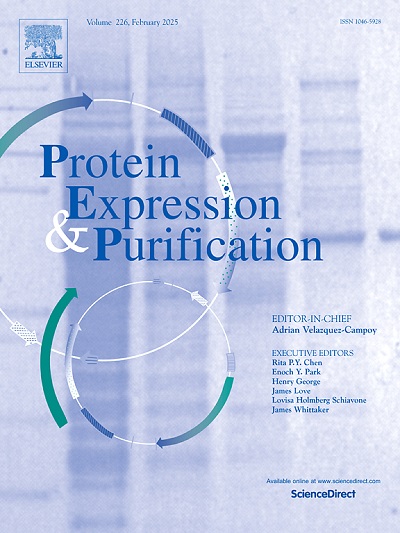Modulation of N-glycosylation in bispecific antibody biosimilars through combined modulators
IF 1.2
4区 生物学
Q4 BIOCHEMICAL RESEARCH METHODS
引用次数: 0
Abstract
To ensure a high degree of similarity between biosimilars and reference drugs, it is crucial to perform comprehensive characterization and maintain rigorous control over glycosylation processes. Here,we aimed to optimize the glycosylation profile of a biosimilar of a bispecific antibody (BsAb) to closely resemble that of the reference drug through the synergistic use of glycosylation modulators. To identify the strongest modulators and appropriate concentration ranges, we first examined the effects of different concentrations of galactose (Gal) and manganese chloride (MnCl2) on the galactosylation rate in Shake Flask, as well as the influence of tris(hydroxymethyl)aminomethane (Tris) on the incorporation of mannose and fucose in 2 L Bioreactor. Importantly, the concurrent use of Tris and galactose did not result in any interaction effects on N-glycan modifications and had no detrimental impact on cell growth, metabolism, antibody charge variants or purity. In conclusion, The concurrent use of 0.75 mM Tris and 8 mM galactose yields a glycosylation profile of Bs-mAb1 that is highly comparable to that of the reference drug, thereby providing an effective strategy for optimizing glycosylation in biosimilars. These findings provide significant insights into the regulation of glycosylation in the production of therapeutic monoclonal antibodies and may contribute to enhancing the consistency and therapeutic performance of biosimilars.
通过联合调节剂调节双特异性抗体生物类似药的n -糖基化。
为了确保生物类似药和参比药之间的高度相似性,进行全面的表征和严格控制糖基化过程至关重要。在这里,我们旨在优化双特异性抗体(BsAb)的生物类似物的糖基化谱,通过糖基化调节剂的协同作用,使其与参比药物非常相似。为了确定最强的调节剂和合适的浓度范围,我们首先研究了不同浓度的半乳糖(Gal)和氯化锰(MnCl2)对摇瓶中半乳糖基化速率的影响,以及三(羟甲基)氨基甲烷(tris)对甘露糖掺入和2 L生物反应器中的影响。重要的是,Tris和半乳糖同时使用不会对n -聚糖修饰产生任何相互作用,也不会对细胞生长、代谢、抗体电荷变异或纯度产生有害影响。综上所述,同时使用0.75 mM Tris和8 mM半乳糖可以产生Bs-mAb1的糖基化谱,这与参考药物的糖基化谱高度相似,从而为优化生物类似药的糖基化提供了有效的策略。这些发现为治疗性单克隆抗体生产中糖基化的调控提供了重要的见解,并可能有助于提高生物仿制药的一致性和治疗性能。
本文章由计算机程序翻译,如有差异,请以英文原文为准。
求助全文
约1分钟内获得全文
求助全文
来源期刊

Protein expression and purification
生物-生化研究方法
CiteScore
3.70
自引率
6.20%
发文量
120
审稿时长
32 days
期刊介绍:
Protein Expression and Purification is an international journal providing a forum for the dissemination of new information on protein expression, extraction, purification, characterization, and/or applications using conventional biochemical and/or modern molecular biological approaches and methods, which are of broad interest to the field. The journal does not typically publish repetitive examples of protein expression and purification involving standard, well-established, methods. However, exceptions might include studies on important and/or difficult to express and/or purify proteins and/or studies that include extensive protein characterization, which provide new, previously unpublished information.
 求助内容:
求助内容: 应助结果提醒方式:
应助结果提醒方式:


